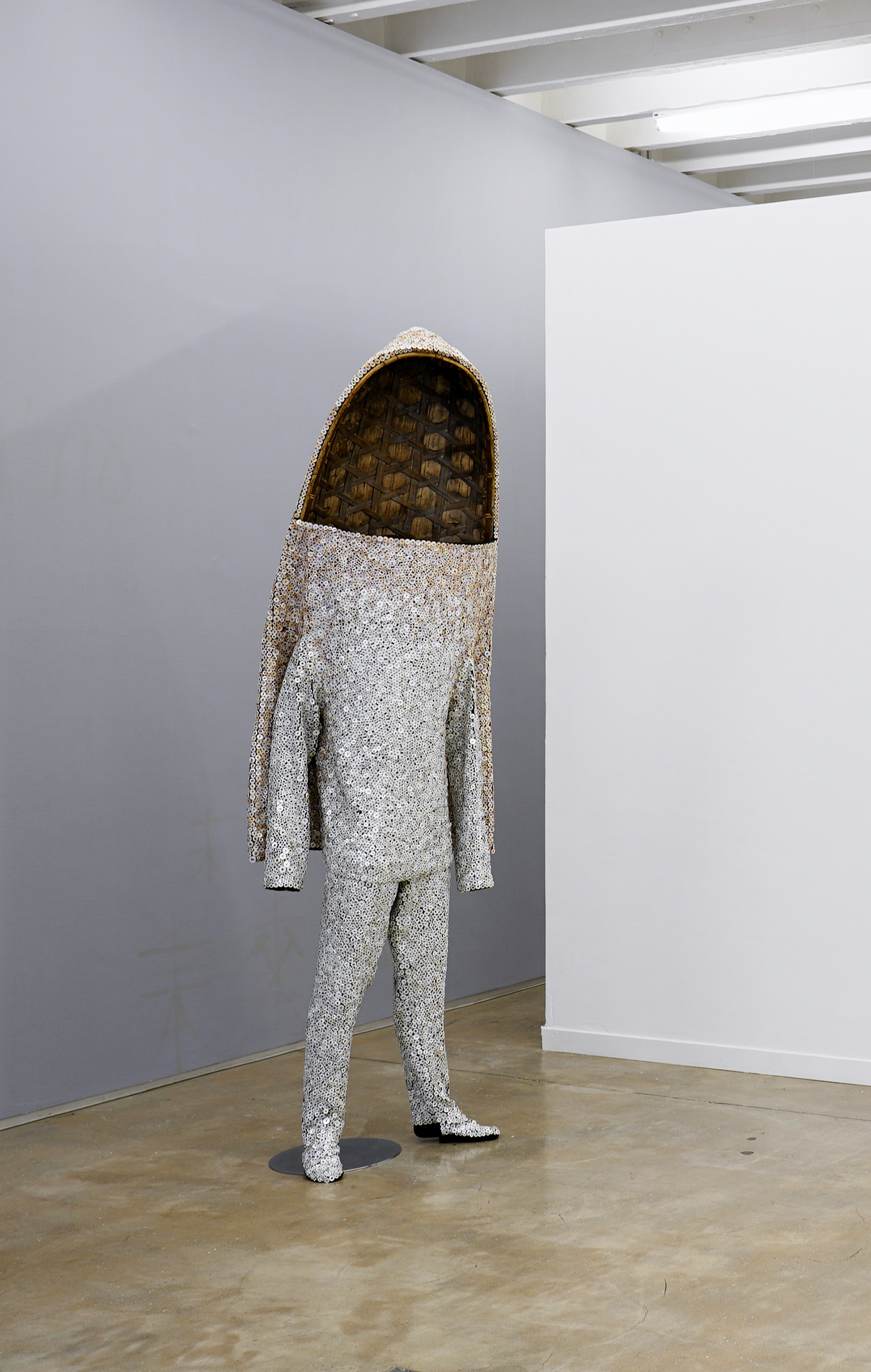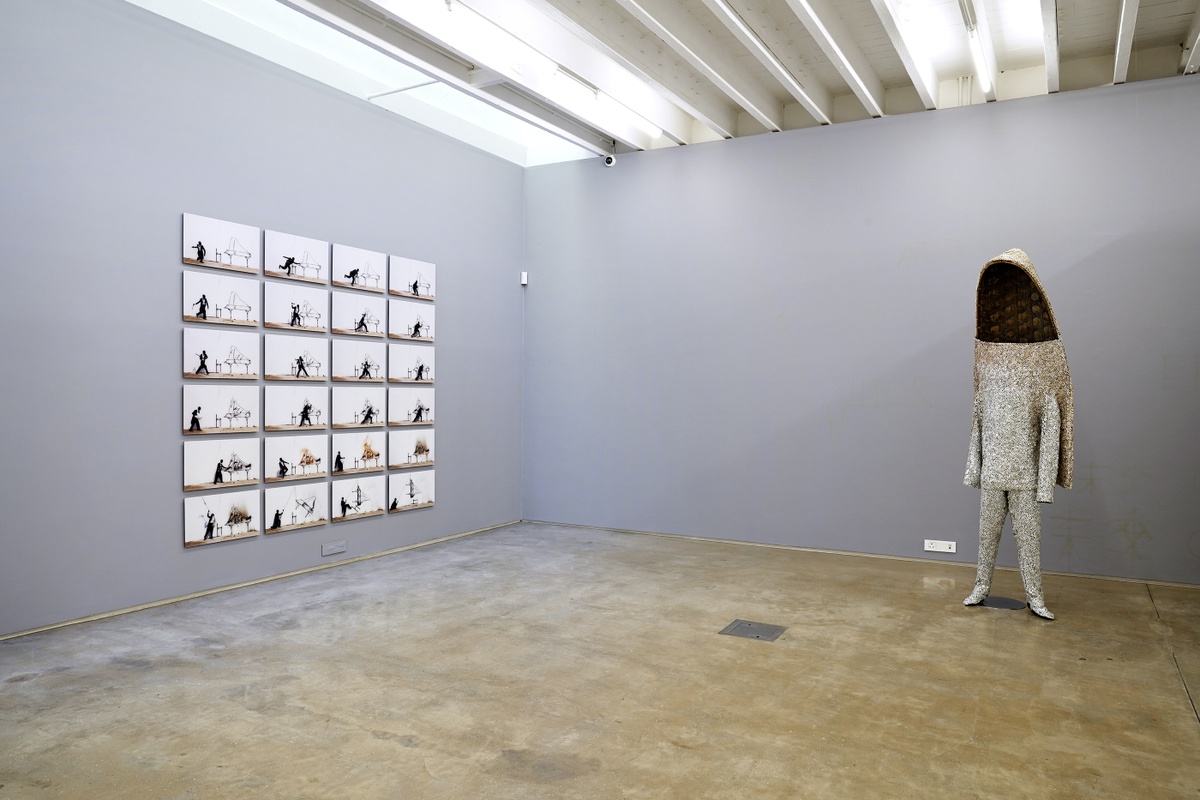Nick Cave

Dance and movement are implicit in all Cave’s Soundsuits, as are the absent figures suggested by their empty forms. The implied body is central to Cave’s work as the site of society’s anxieties and divisions. With his suits, he proposes a novel way of inhabiting the self without playing to the script of stereotype – concealing the body yet insisting on its existence. The Soundsuits are, he says, “a way of alarming others to my presence,” yet remaining unseen as himself. They invite vulnerability to inhabit their protective shields as second skins under which the anonymous body might find solace. The suits’ highly decorated forms further signal their transformative potential. “I just want everything to be fabulous,” Cave says of his Soundsuits. “I want it to be beautiful, even when the subject is hard.”
b.1959, Fulton
“I’m a messenger first and an artist second,” Nick Cave says. “My projects are like deeds that I need to deliver… I’ve been called to do this work.” For all the bright spectacle of his objects and performances, Cave’s preoccupations are more often ominous. Gun violence, racial inequality and police brutality are the many touchstones to which he returns in his work. Indeed, his most notable series of works, the Soundsuits, began in reaction to the beating of Rodney King in 1992. The elaborate costumes (which now number well over 500) are, to the artist, suits of armour with radical potential for embodied change. As ritual objects of diverse reference, they combine performative elements borrowed from drag culture, masquerade, Mardi Gras, and West African ceremony. The wearer, Cage suggests, freed from the constraints of identity – from gender, race and nationality – transforms into shaman. When uninhabited, displayed in galleries and museums, the Soundsuits become “altars, shrines – these alternative relics that contain or hold spirit.” That the spirit might find a material housing beyond the fallible body offers Cage some comfort.
